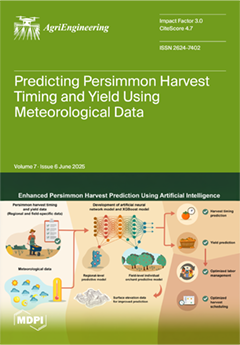Open AccessArticle
Tomato Yield Under Different Shading Levels in an Agrivoltaic Greenhouse in Southern Spain
by
Anna Kujawa, Julian Kornas, Natalie Hanrieder, Sergio González Rodríguez, Lyubomir Hristov, Álvaro Fernández Solas, Stefan Wilbert, Manuel Jesus Blanco, Leontina Berzosa Álvarez, Ana Martínez Gallardo, Adoración Amate González, Marina Casas Fernandez, Francisco Javier Palmero Luque, Manuel López Godoy, María del Carmen Alonso-García, José Antonio Carballo, Luis Fernando Zarzalejo Tirado, Cristina Cornaro and Robert Pitz-Paal
Cited by 2 | Viewed by 5250
Abstract
Agrivoltaic greenhouses in southern Spain offer a sustainable way to manage excessive irradiance levels by generating renewable energy. This study presents a shading experiment on tomato cultivation in a raspa-y-amagado greenhouse in Almeria, southern Spain, during the 2023–2024 growing season. Photovoltaic modules were
[...] Read more.
Agrivoltaic greenhouses in southern Spain offer a sustainable way to manage excessive irradiance levels by generating renewable energy. This study presents a shading experiment on tomato cultivation in a raspa-y-amagado greenhouse in Almeria, southern Spain, during the 2023–2024 growing season. Photovoltaic modules were mimicked by opaque plastic sheets that were arranged in a checkerboard pattern on the roof of the greenhouse. Two shading zones (30% and 50% roof cover ratio) were compared against an unshaded control zone. Microclimate, plant physiology, yield and quality were monitored during the study. The results show that shading influenced the microclimate, which directly impacted crop yield. The 30% and 50% shading zones resulted in 15% and 26% crop yield reductions, respectively. A preliminary, theoretical analysis of potential revenues of the photovoltaic yield showed that reductions in crop yield can be overcompensated by the energy generated by the PV system. For the summer crop cycle, a higher PV production and lower crop yield reductions can be expected. The economic advantage demonstrates the potential of agrivoltaic greenhouses in southern Spain.
Full article
►▼
Show Figures





